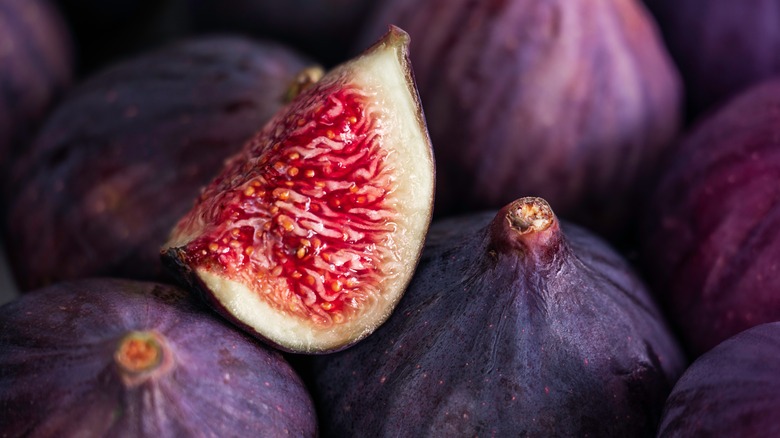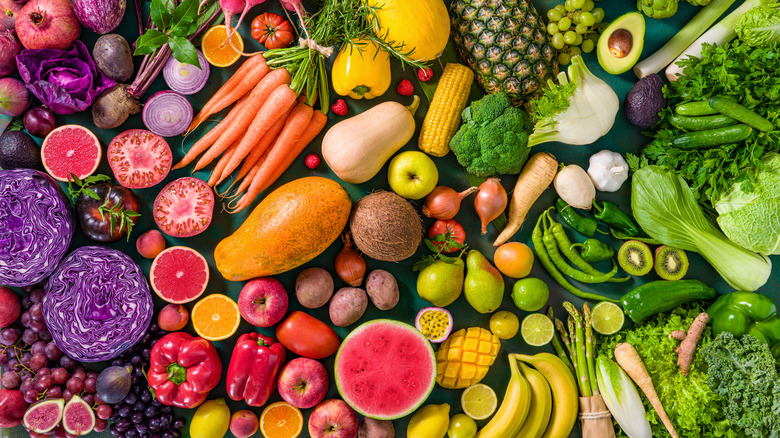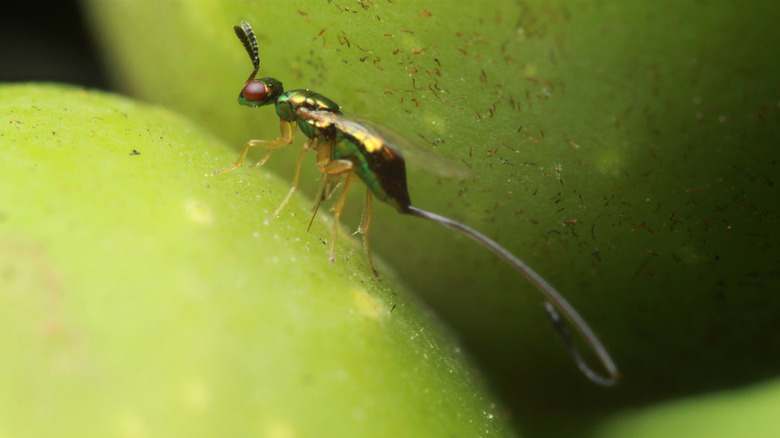Don't Believe The Myth That Figs Are Fruit
Figs are an ancient delicacy that have been cultivated around the world,served at Cleopatra's most lavish banquet, and are still commonly consumed today. Whether served fresh in a salad, baked into a tart, or turned into fig jam for a delicious cheese pairing, figs are called into a wide variety of culinary situations that require a unique touch of sweetness. But despite their long and prevalent history, these delicious, deep purple gems retain a certain degree of mystery.
Although the fig is commonly referred to as a fruit, that's actually a myth. But defining what it is a bit more complicated, as it has multiple components that are botanically classified in different ways. The purple exterior that gives the fig its shape is called a syconium, and inside it are hundreds of individual pedicellate pistillate flowers, which are both male and female. Since the fully formed structure contains within it multiple fertilized ovaries, it is sometimes called a multiple fruit or composite fruit — but syconium is the most accurate term for this ingredient.
What differentiates a syconium from a fruit?
Our popular, culinary, and nutritional classification of things in the natural world doesn't always align with science. For example, tomatoes and zucchini are usually thought of as vegetables, but scientifically are fruits. Peanuts are botanically legumes but are classified as groundnuts in the culinary world. Our identification of the fig as a fruit makes sense — its sweetness makes it a great choice for jams and baked goods, and it gets dried alongside other fruit for a surprising energy boost. But when you get down to it, scientifically, it's just not the case.
Botanically, fruit is defined as "the fleshy or dry ripened ovary of a flowering plant, enclosing the seed or seeds" (per Britannica). Instead, the fig is an inverted bundle of flowers – some male and some female — enclosed within a soft, edible stem called the syconium. Because the fig is known as a whole, enclosed shape, the syconium is the official designation. But inside that fleshy wall, what gives the fig its distinct texture and flavor is a collection of fertilized, matured fruits. This is why some call the fig a multiple or composite fruit, categorizing it alongside the pineapple, blackberry, or raspberry, which are a bundled collection of fertilized, matured flower ovaries that have fused into a singular unit. But the syconium is more accurately thought of as an inverted multiple fruit.
How do enclosed flowers develop into fruits?
With the fig's flowers enclosed within the syconium, the process of pollinating them poses more of a challenge than other species. Enter the fig wasp. For the 900 species of fig tree, there are a perfectly corresponding 900 species of fig wasp — each pollinating one type of fig. These wasps are small — no longer than an eyelash — and, entering through the ostiole, small openings at the bottom of figs, they singlehandedly fertilize the flowers inside.
A female wasp enters the fig, losing her wings and antennae as she squeezes through the ostiole. Once inside, she lays eggs among the flowers, pollinating female flowers in the process, and then dies. Some flower ovaries produce enclosures in which wasp larvae develop while others produce fig seeds. The wasps hatch after a few days, males before females. Male wasps move throughout the syconium and fertilize females still inside their enclosures, then dig tunnels out of the fig and then die. Once females emerge, they leave covered in pollen via the tunnels, searching for new figs.
Fig wasps and trees are inextricably linked — neither could exist without the other. And while their life cycles may shock you, they're also kind of magical. Plus, we get figs out of the deal, so who are we to complain? Especially as this occurs only in inedible figs; wasps still pollinate the type we eat (cultivated figs), but externally (per Britannica) — so rest easy knowing you're not eating wasps.



